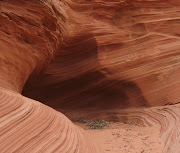 Who knew the moon had mountain ranges higher than the Rockies tallest peaks with valleys that plunged 2.5 miles down below the surface? Impressive, a rotating pebble in the universe with technicolor highlights from last week's lunar eclipse has a wider range of topography in a smaller geographical space than Earth. This is all in advance of NASA's long held ambition to open up a moon base near the Moon's south pole. High resolution shots of the Moon are in great demand as
Who knew the moon had mountain ranges higher than the Rockies tallest peaks with valleys that plunged 2.5 miles down below the surface? Impressive, a rotating pebble in the universe with technicolor highlights from last week's lunar eclipse has a wider range of topography in a smaller geographical space than Earth. This is all in advance of NASA's long held ambition to open up a moon base near the Moon's south pole. High resolution shots of the Moon are in great demand astime draws short to make future lunar expeditions happen in less than twenty years. Engineers are building concept moon vehicles for the eventual moon landing. (NASA photo)
“We now know the south pole has peaks as high as Mount McKinley and crater floors four times deeper than the Grand Canyon,” said Doug Cooke, a deputy associate administrator at NASA. The new data is “not scaring us away,” he said, adding: “It’s intriguing. It’s just enhanced our understanding of it.”
In 2006, NASA took advantage of a once-in-17-years alignment when the Moon’s axis is tilted enough to get a good look at the bottom of the Moon. In three separate observations conducted months apart, the 70-meter radar dish at Goldstone directed a 90-minute-long radar signal at the Moon, and two 34-meter antennas at Goldstone recorded the echoes. That produced images covering a region 400 miles by 250 miles. The images have a resolution of 20 meters a pixel, and the terrain’s elevation at each point was measured to within five meters — good enough to distinguish something roughly the size of a house.
 Lot shopping on the Moon is more difficult as the requirements of a place to land, enough light for solar powered equipment, maybe a great Earth view are now mapped to what the actual topography can accommodate. NASA's real estate speculators revised their bids with increasing anticipation for the unmanned lunar scouts to beam back sharper images as they hurtle at high velocity on the landing for the sake of creating a cloud of moon dust for anxious scientists to examine for any presence of ice. Ice, the new must-have as NASA examines maximizing all of the Moon's resources as pioneering astronauts attempt to set up housekeeping for other manned missions. Besides, no joke, NASA is planning to launch a mobile phone network on the moon reaching out and touching orbiting satellites.
Lot shopping on the Moon is more difficult as the requirements of a place to land, enough light for solar powered equipment, maybe a great Earth view are now mapped to what the actual topography can accommodate. NASA's real estate speculators revised their bids with increasing anticipation for the unmanned lunar scouts to beam back sharper images as they hurtle at high velocity on the landing for the sake of creating a cloud of moon dust for anxious scientists to examine for any presence of ice. Ice, the new must-have as NASA examines maximizing all of the Moon's resources as pioneering astronauts attempt to set up housekeeping for other manned missions. Besides, no joke, NASA is planning to launch a mobile phone network on the moon reaching out and touching orbiting satellites.The Moon is a great slingshot from Earth and gets NASA ever closer to a manned mission to Mars. Earth, provided a great once in a seventeen year opportunity to study through a telescope platform based in California.The new images suggest the moon will be a rich site for scientific study, according to Kelly Snook, NASA's chief lunar scientist. The Earth and moon formed about 4.5 billion years ago along with the other planets. The Earth's surface has been altered by wind and water, forces absent from the moon.
However late this year, NASA's plans to launch the unmanned Lunar Reconnaisance Orbiter and its companion, the Lunar Crater Observation and Sensing Satellite, to take a fresh look.
"It's a history book really for the formation of our solar system," said Snook. "We cannot get this information anywhere else."
The mission is part of NASA's strategy to return human explorers to the moon by 2020 to establish an outpost and training ground for future missions to Mars. (NASA)

Updated in a second edition is The Moon: Resources Future Development and Settlement that speaks to NASA's long held hopes on making the moon a jumping off point to the rest of the solar system and the Milky Way. This is a group effort by David Shrunk, Burton Sharpe, Bonnie L. Cooper, and Madhu Thangavelu.












No comments:
Post a Comment